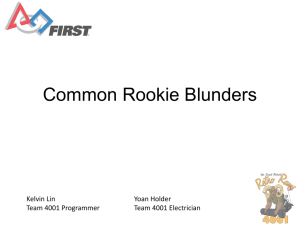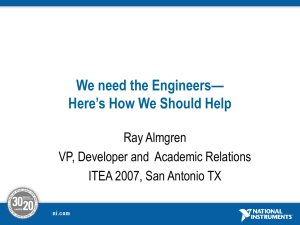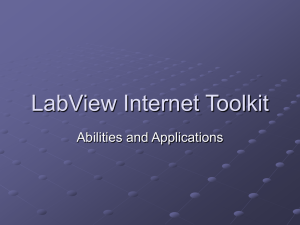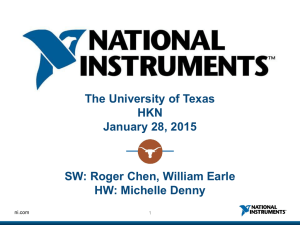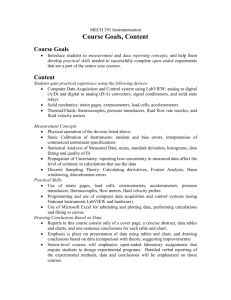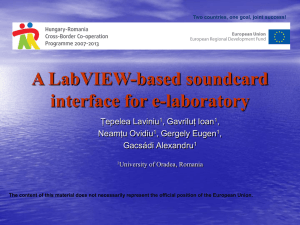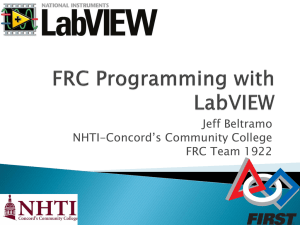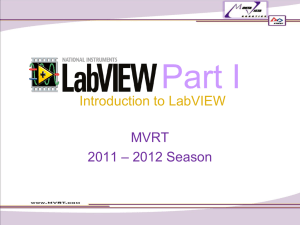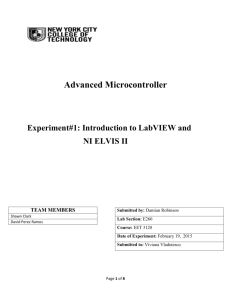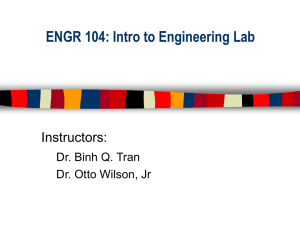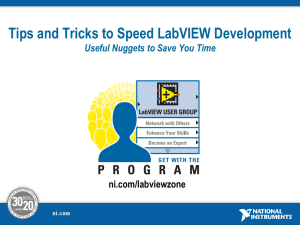Get PPT file
advertisement
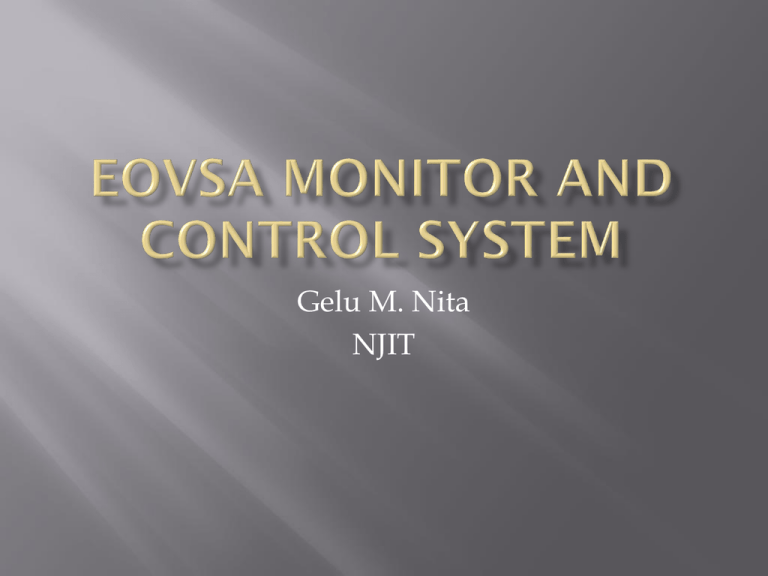
Gelu M. Nita NJIT Temperature Sensors Noise Diode Control Day/Night Solar Burst Attn. Ctrl. Attn. Ctrl. V/H RF Power Out Attn. Ctrl. Solar Burst Attn. Ctr. V/H Power Out Freq. Var. Attn. Ctrl Ping/Pong LOs Subarray 2 LO Subarray Switch Ctr. Ping-Pong Switch? PCI eXtensions for Instrumentation (PXI) is a rugged PC-based platform that offers a high-performance, low-cost deployment solution for measurement and automation systems. PXI combines the Peripheral Component Interconnect (PCI) electrical bus with the rugged, modular Eurocard mechanical packaging of CompactPCI and adds specialized synchronization buses and key software features. An NI-PXI controller may host both a Windows OS that may provide a graphical user interface and a RealTime OS that may provide deterministic interaction with its peripheral modules used to control/monitor the LO and DC subsystems, and antenna frontend cRIO modules. Patriot Antenna Controller: MODBUS over TCP/IP between the Antenna Controller and its Field Point dedicated cRIO-RT Module. Field Point Modules: TCP/IP between the Antenna Control Computer (ACC) and the field point cRIO-RT modules LO and DC systems (cRIO or PXI-RT): TCP/IP (on a real or virtual Ethernet network) Unifying Solution: The Shared Variable Engine (SVE): NI-PSP communication protocol implemented on top of a TCP/IP layer SVE The Common Object Request Broker Architecture (CORBA) is a standard defined by the Object Management Group (OMG) that enables software components written in multiple computer languages and running on multiple computers to work together (i.e., it supports multiple platforms). OLE for Process Control (OPC), which stands for Object Linking and Embedding (OLE) for Process Control, is an industry standard maintained by the OPC Foundation that was designed to provide a common bridge for Windows based software applications and process control hardware based on the Object Linking and Embedding (OLE), Component Object Model (COM), and Distributed Component Object Model (DCOM) technologies developed by Microsoft for the Microsoft Windows operating system family. Win PCs Shared Variable Engine Data Socket With PSP Mac OS Linux PXI-RT cRIO-RT The SVE is an Object Linking and Embedding (OLE) for Process Control (OPC) Server 3.0 compliant and can act as an OPC server on Windows machines. Any OPC client can write to or read from a network-published shared variable hosted on a Windows machine Host Hardware 64 Bit Intel Core 2 Duo 1.8 GHz 2 GB RAM Gigabit ethernet Host Software Windows Vista 64 LabVIEW 8.20 and LabVIEW 8.5 Compact RIO Hardware NI cRIO 9012 controller 400 MHz processor 64 MB DRAM Compact RIO Software LabVIEW RT 8.20 and LabVIEW RT 8.5 Network Variable Engine 1.2 (with LabVIEW 8.20) and 1.4 (with LabVIEW 8.5) Variable Client Support 1.0 (with LabVIEW 8.20) and 1.4 (with LabVIEW 8.5) In addition to managing networked-published shared variables, the SVE is responsible for: · Collecting data received from I/O servers. · Serving up data through the OPC and the PSP servers to subscribers. · Providing scaling, alarming, and logging services for any shared variable with those services configured. These services are provided by the LabVIEW Datalogging and Supervisory Control (DSC) Module. · Monitoring for alarm conditions and responding accordingly. The LabVIEW software provides native support for the National Instrument hardware intended to be used for controlling/monitoring the EOVSA system. The Shared Variable Engine and the LabVIEW DSC provide the means for an efficient and timesaving implementation of the EOVSA monitor and control system. Any non LabVIEW EOVSA subsystem may have ral-time access to the Shared Variable Engine data as long as it is able to establish connection with a standard 3.0 compliant OPC server.
